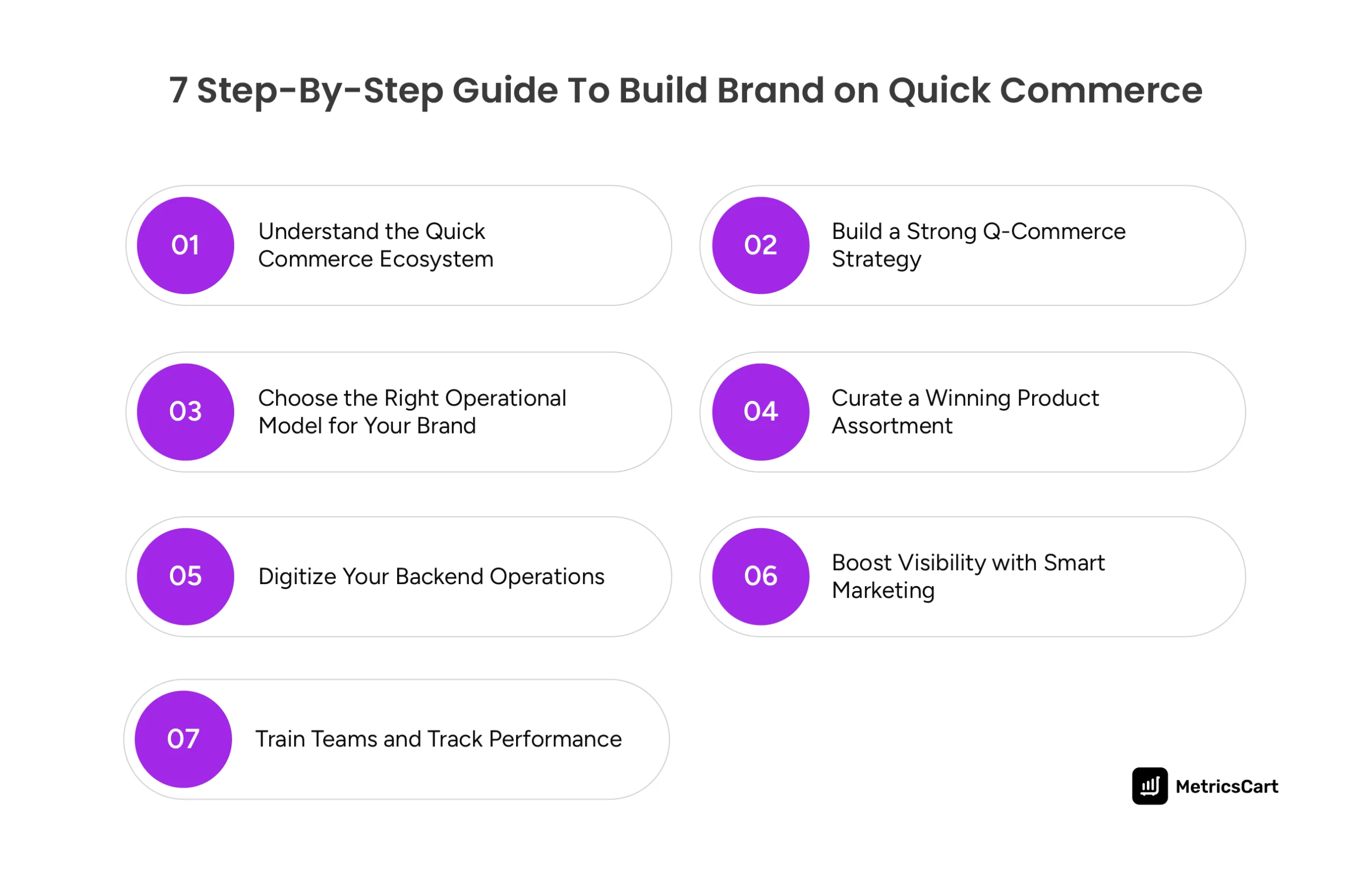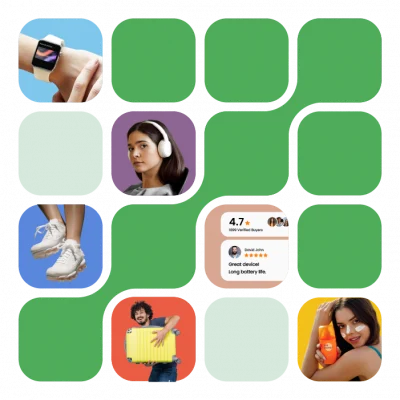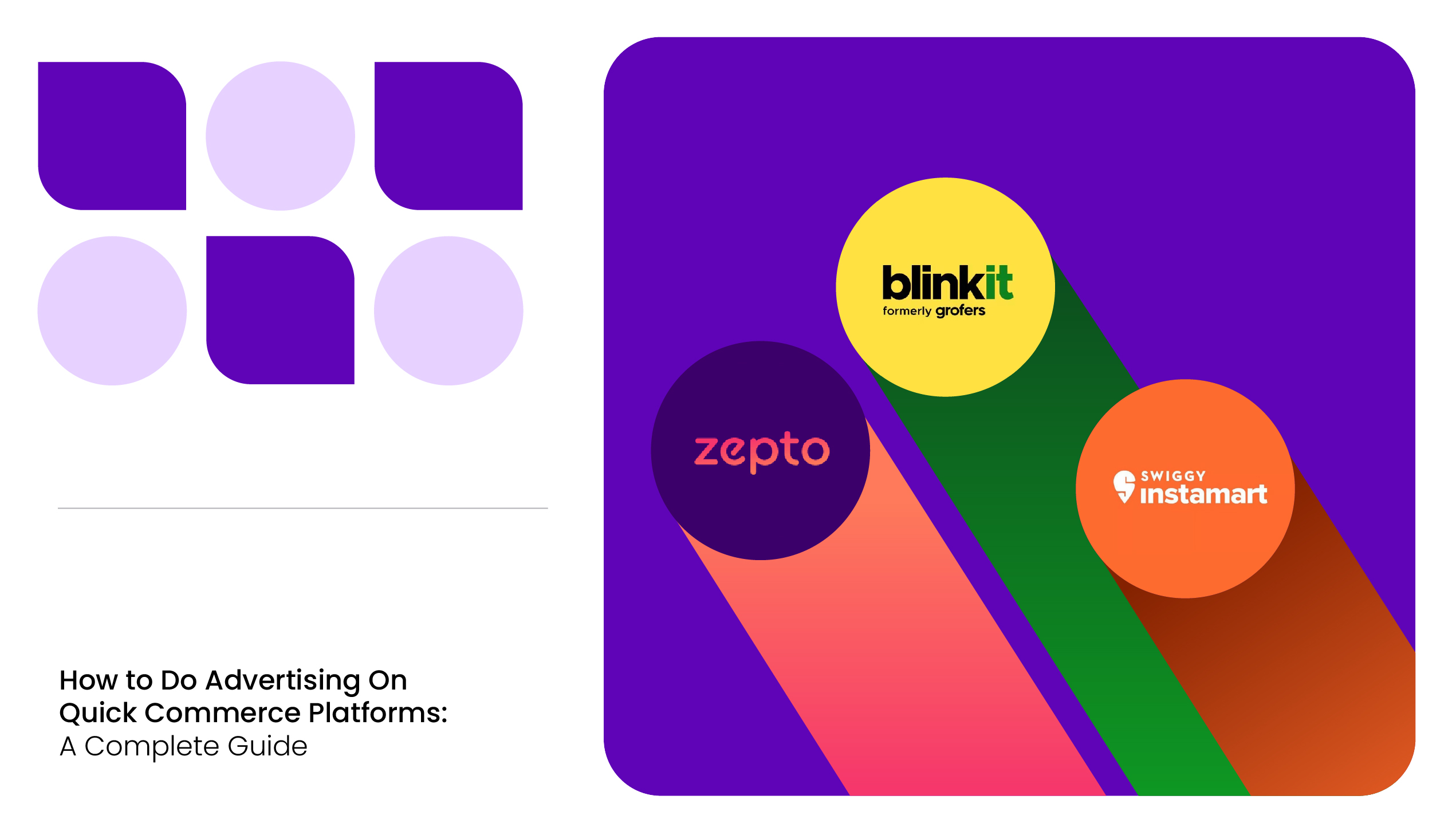If you’ve been managing a brand or driving e-commerce growth, you’ve likely heard about quick commerce, often abbreviated as Q-commerce. It’s the buzzword that’s disrupting how products are bought and delivered. Q-commerce promises delivery of essential products in under 30 minutes, sometimes even faster. But why is it important to build a brand on quick commerce? Because today’s customers don’t just want products; they want them now. And brands that can fulfill that demand are gaining a major competitive edge. Whether it’s groceries, personal care items, or last-minute party snacks, quick commerce is fast becoming the preferred shopping method in urban areas.
READ MORE | Want to know the major quick commerce players in the US? Check out our blog on How Quick Commerce is Evolving: 10 Key Players in 2025.

Step 1: Understand the Quick Commerce Ecosystem
Quick commerce, or Q-commerce, is more than just faster delivery; it’s a whole new way of shopping. Unlike traditional e-commerce, which delivers in 1–3 days, Q-commerce focuses on delivering essentials like snacks, toiletries, and groceries within 10–30 minutes. This is made possible through dark stores or micro-warehouses located in urban neighborhoods. The product selection is smaller but highly focused on urgent, everyday needs. Consumers shop on impulse, often via mobile apps, expecting speed and convenience. These buyers aren’t looking to browse; they want what they need, right now. For brands, this means adapting to a hyper-local, fast-moving, mobile-first retail model. Understanding these key differences is crucial before entering the Q-commerce space. If your current brand strategy for quick commerce is centered on slow-moving, broad-based catalogs, you’ll need to pivot sharply to keep up in Q-commerce.
Step 2: Build a Strong Q-Commerce Strategy
To succeed in quick commerce, your brand needs to be sharp, local, and fast. Here are four key focus areas:
Pick the Right Products and Packs
Focus on daily-use essentials like snacks, hygiene items, and household basics. Offer smaller, easy-to-carry packs that fit delivery bags and cater to impulse buying behavior.
Stock Smart and Stay Local
Your products must be close to your customers. Partner with micro-warehouses or dark stores in major delivery zones. Track inventory by PIN code and restock often to avoid “out of stock” issues.
Price to Attract, Not Just Compete
Use local data to offer smart discounts and create value bundles. Shoppers in Q-commerce care about speed, but they’ll choose brands that offer both convenience and good deals.
Market in Real-Time
Use mobile-friendly ads that highlight delivery speed and stock availability. Show up when and where people are ready to buy—with clear visuals and simple, catchy product names. Together, these four actions help your brand stay relevant and competitive in the high-speed world of Q-commerce.
READ MORE | Interested in knowing about the leading quick commerce players in India? Check out our blog on Speedy Deliveries: Top Quick Commerce Players in India.
Step 3: Choose the Right Operational Model for Your Brand
You can’t play in the quick commerce space without deciding how you’ll operate. There are generally two ways to do this:
Option A: Full Control (Owned Infrastructure)
This involves setting up your own dark stores or fulfillment hubs and managing deliveries via your own fleet or a logistics partner. Pros: Total control over inventory, margins, and branding Cons: High initial investment, complex operations
Option B: Platform Partnership (Marketplace Model)
Most brands today start by collaborating with existing Q-commerce platforms, such as Blinkit, Swiggy Instamart, or Zepto. You manage inventory and promotions; they handle the logistics. Pros: Quick setup, lower investment Cons: Lower control over customer experience, shared data
Step 4: Curate a Winning Product Assortment
Your product catalog for Q-commerce should look different from your regular e-commerce assortment. Ask yourself:
- Does this product fulfill an urgent or frequent need?
- Is the product easy to store and deliver quickly?
- Does the product offer value in a smaller pack size?
Great Q-commerce categories include:
- Snacks, soft drinks, and chocolates
- Personal hygiene items like razors, deodorants, and sanitary products
- Baby care and pet essentials
Avoid bulky or non-essential items. They simply don’t align with the Q-commerce mindset. 
Step 5: Digitize Your Backend Operations
Quick commerce only works if your operations are as fast as your promises. You’ll need robust digital infrastructure:
- A connected Enterprise Resource Planning (ERP) system to track orders, returns, and replenishments
- Real-time inventory management tools like MetricsCart
- Integrated sales dashboards for platform-specific performance tracking
This ensures that you don’t oversell or understock. Two fatal errors in this fast-paced game.
Step 6: Boost Visibility with Smart Marketing
Customers will only buy what they can see. Use every available tool to increase your brand’s visibility on Q-commerce apps:
- Run platform banner ads, sponsored listings, and featured placements
- Optimize your product listings with crisp titles, clean images, and relevant keywords
- Drive traffic from your social media to Q-commerce listings using “Buy Now” buttons or QR codes
Influencer tie-ins and user-generated content showing your product arriving “within 10 minutes” can also be powerful.
Step 7: Train Teams and Track Performance
A quick commerce strategy for brands requires a mindset shift, not just a channel change. Train your teams to:
- Understand how Q-commerce platforms work
- Respond quickly to stockouts or delivery issues
- Use performance dashboards and tweak strategies weekly
Track key metrics such as:
- Fill rate and stock availability by region
- Order-to-delivery time
- Product-wise conversion rates
- Coupon redemption rates
Use these insights to make informed decisions about product expansion, pricing tweaks, and promotional campaigns.
READ MORE | Curious to know how Blinkit operates? Check out our blog on How Blinkit Works: Understanding Its Business and Delivery Model.
Conclusion
Quick commerce is no longer a niche; it’s becoming a core part of modern retail. With hyper-local delivery, convenience-driven shopping, and consumer expectations on the rise, brands that don’t adapt risk losing relevance. To summarize, getting Q-commerce ready means:
- Rethinking product formats and sizing
- Ensuring hyper-local availability
- Collaborating with agile delivery partners
- Mastering digital operations
- Engaging customers through targeted promotions and fast service
The time to act is now. Get your brand quick commerce ready with the expert assistance of MetricsCart and tap into a whole new world of consumer convenience, loyalty, and growth.
Step up Your Brand Game and Outshine Competitors!
FAQs
In 2025, Q-commerce accounts for over 10% of India’s e-retail and is also rapidly expanding in urban US markets. Consumers now expect instant gratification. Brands that participate early can gain market share, build loyalty, and respond to impulse demand more quickly than traditional players.
Quick commerce brand preparation requires building their delivery infrastructure or partnering with Q-commerce platforms, such as Blinkit, Zepto, or Instamart. Starting with a marketplace model is faster and less capital-intensive, while building your setup allows more control.
A dark store is a small, local fulfillment center that is not open to the public and is used exclusively for online orders. These micro-warehouses reduce delivery times by stocking high-demand SKUs near the end consumer, which is crucial for meeting 10-minute delivery promises.
Brands require real-time inventory tracking, ERP integration, demand forecasting, and dashboards to optimize platform-specific sales performance. Tools like MetricsCart help monitor fill rates, conversions, and regional demand patterns.
Key metrics include stock availability, fill rate, delivery time, conversion rates, and coupon redemption. Monitoring these weekly allows fast pivots and avoids lost sales due to stockouts or pricing errors.







